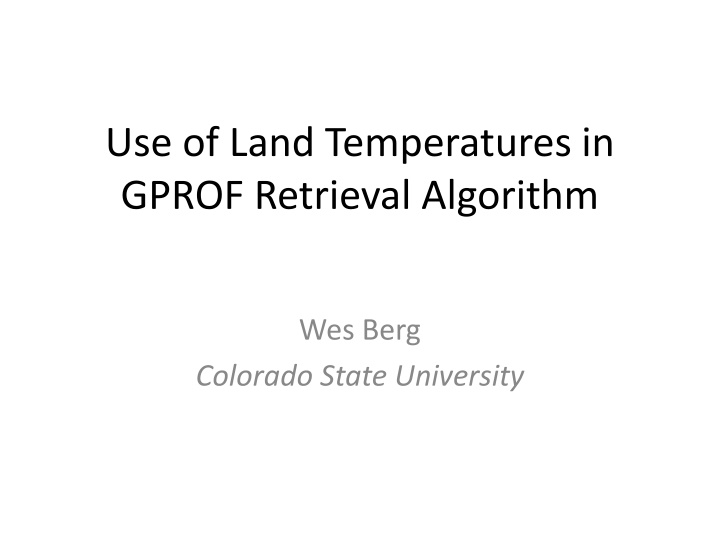
Land Temperature Usage in GPROF Retrieval Algorithm Analysis
Explore the utilization of land temperatures in the GPROF retrieval algorithm, including considerations on database stratification and the impact on regional variability capture. Delve into existing biases and potential improvements for a more consistent retrieval process over land areas.
Download Presentation

Please find below an Image/Link to download the presentation.
The content on the website is provided AS IS for your information and personal use only. It may not be sold, licensed, or shared on other websites without obtaining consent from the author. If you encounter any issues during the download, it is possible that the publisher has removed the file from their server.
You are allowed to download the files provided on this website for personal or commercial use, subject to the condition that they are used lawfully. All files are the property of their respective owners.
The content on the website is provided AS IS for your information and personal use only. It may not be sold, licensed, or shared on other websites without obtaining consent from the author.
E N D
Presentation Transcript
Use of Land Temperatures in GPROF Retrieval Algorithm Wes Berg Colorado State University
Algorithm Considerations Database stratification Uses SST (Reynolds) and TPW (GANAL/ERA-I) over oceans Previously used surface temperature and TPW (GANAL/ERA-I) over land Changed to using 2m temperature and TPW Consistency issues Three versions of GPROF are run Near real-time (uses JMA forecast data) Standard product (uses GANAL data) Climate product (uses ERA-I data)
Questions for Discussion How well does stratifying the database by TPW and 2m temperature help capture regional variability. Are there known issues with biases in TPW, surface temperature, and/or 2m temperature the global analyses used by the retrieval algorithm? Are there better, more consistent datasets that could be used? Are there other variables that might make more sense for stratifying the database over land that are readily available from global analysis or other global data sources?




